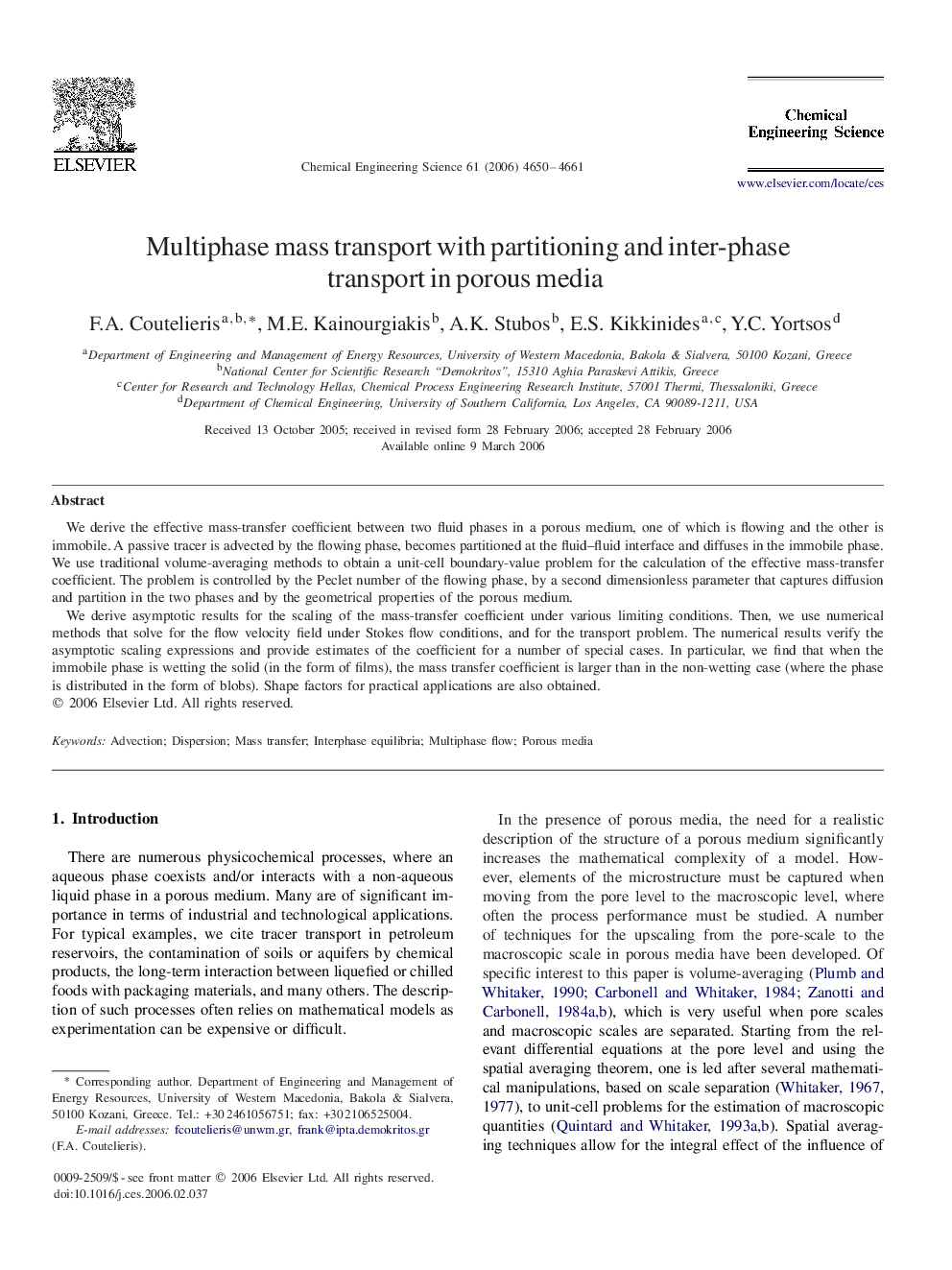| Article ID | Journal | Published Year | Pages | File Type |
|---|---|---|---|---|
| 158717 | Chemical Engineering Science | 2006 | 12 Pages |
We derive the effective mass-transfer coefficient between two fluid phases in a porous medium, one of which is flowing and the other is immobile. A passive tracer is advected by the flowing phase, becomes partitioned at the fluid–fluid interface and diffuses in the immobile phase. We use traditional volume-averaging methods to obtain a unit-cell boundary-value problem for the calculation of the effective mass-transfer coefficient. The problem is controlled by the Peclet number of the flowing phase, by a second dimensionless parameter that captures diffusion and partition in the two phases and by the geometrical properties of the porous medium.We derive asymptotic results for the scaling of the mass-transfer coefficient under various limiting conditions. Then, we use numerical methods that solve for the flow velocity field under Stokes flow conditions, and for the transport problem. The numerical results verify the asymptotic scaling expressions and provide estimates of the coefficient for a number of special cases. In particular, we find that when the immobile phase is wetting the solid (in the form of films), the mass transfer coefficient is larger than in the non-wetting case (where the phase is distributed in the form of blobs). Shape factors for practical applications are also obtained.
